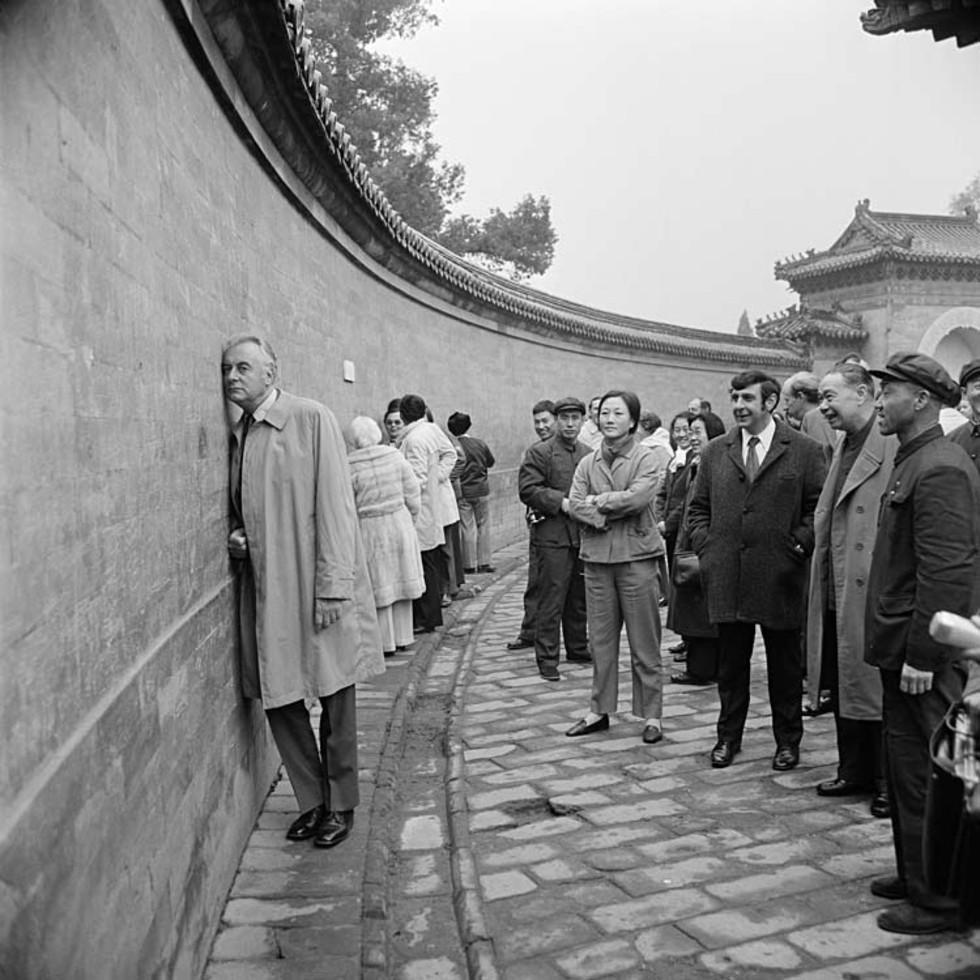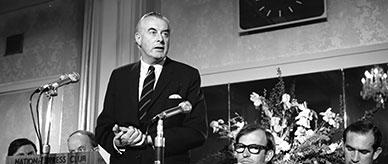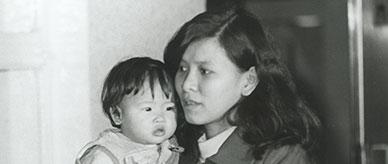


About this record
This is a black-and-white photograph of the Australian Labor Prime Minister Gough Whitlam during his historic visit to China between 31 October and 4 November 1973. Dressed in a long coat, Whitlam has his ear to part of the circular Echo Wall in the Temple of Heaven in Beijing. Further along the wall, others are doing the same. Among a small crowd watching Whitlam is Australia’s first ambassador to China, Stephen Fitzgerald, dressed in a coat and tie. Beside him, with her arms crossed, is a Chinese interpreter.
Educational value
- Prime Minister Whitlam’s 1973 diplomatic trip was the first visit to China by an Australian Prime Minister and a milestone in Australia–China relations. Whitlam, Prime Minister from 1972 to 1975, established diplomatic relations with mainland China soon after coming to power.
- After nearly three decades of the Cold War, Whitlam’s visit to China in 1973 began the first period of diplomatic relations between Australia and any communist country. The Cold War was a period of tension between the United States and its allies, and the Soviet Union and its allies, which began after the end of the World War II and finally ended in 1991. By the early 1970s China and the Soviet Union had also been on poor terms for many years, even though both countries had communist governments.
- The visit depicted here was not Whitlam’s first to China. As Opposition leader, he led a Labor Party delegation to China in 1971—at a time when the McMahon government was still refusing to open any diplomatic ties with the country. The 1971 Whitlam-led visit came several days before the United States announced that President Richard Nixon would visit Beijing. (The Nixon visit took place in February 1972.)
- Australia did conduct trade with China during the 1950s, but the establishment of diplomatic relations in 1972 paved the way for rapid expansion. By 2008, Australia’s two-way trade with China was worth almost $68 billion. After the United States, China is Australia’s biggest source of imported products, and a major source of students and tourists. China is a major importer of Australian iron ore and other mineral and agricultural goods.
- The party led by Whitlam to China in 1973 included his wife Margaret and the Minister for Northern Development, Rex Patterson. The itinerary included a state banquet at the Great Hall of the People, hosted by Premier Zhou Enlai; a meeting with chairman Mao Zedong; and talks with King Norodom Sihanouk of Cambodia, who was living in exile in Beijing at the time. Sightseeing included a visit to the Great Wall of China.
- The Echo Wall seen in the photograph surrounds the Imperial Vault of Heaven in the Temple of Heaven in Beijing. Also known as the Whispering Wall, the acoustic properties of this round structure allow a person whispering along the inner wall to be heard around the other side.
Acknowledgments
Learning resource text © Education Services Australia Limited and the National Archives of Australia 2010.
Need help with your research?
Learn how to interpret primary sources, use our collection and more.


